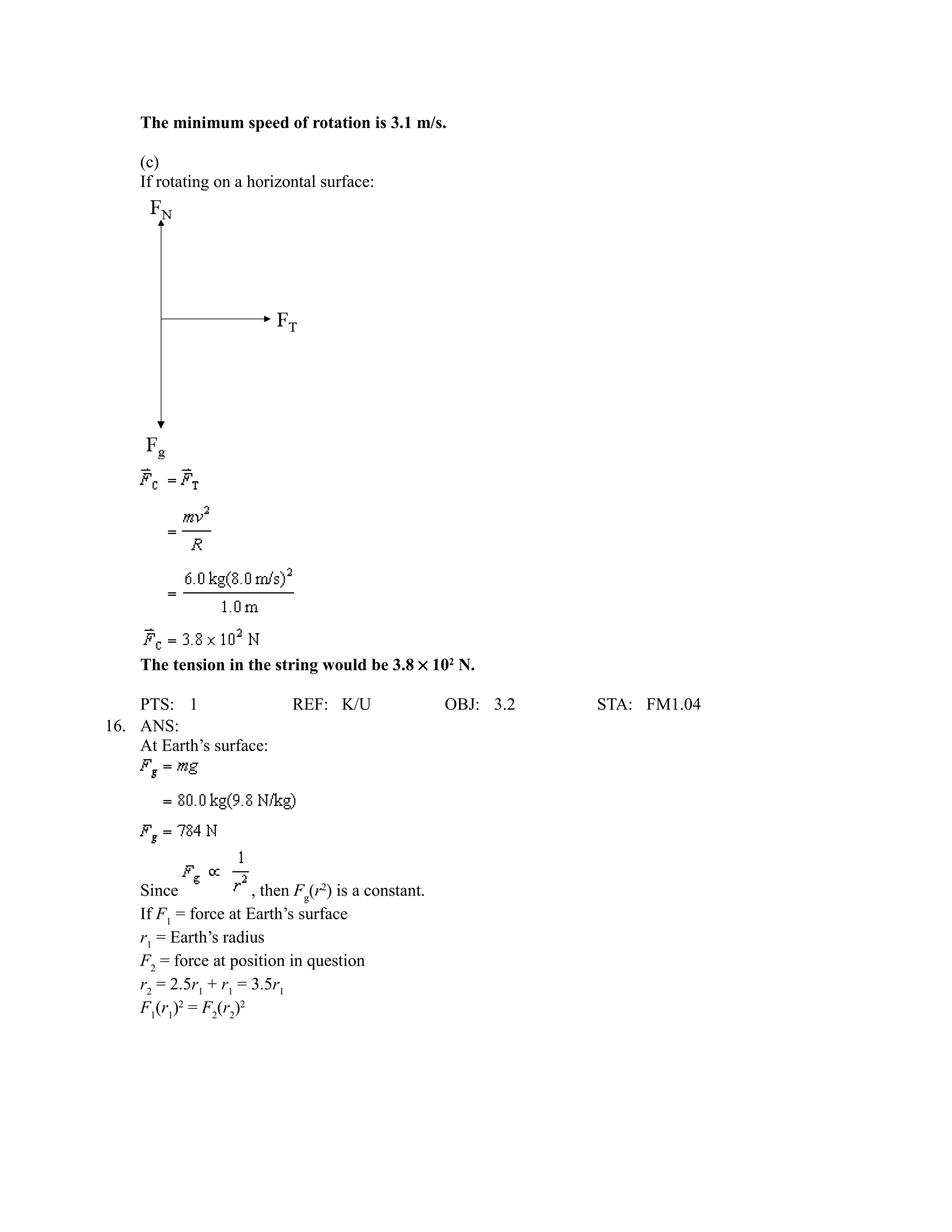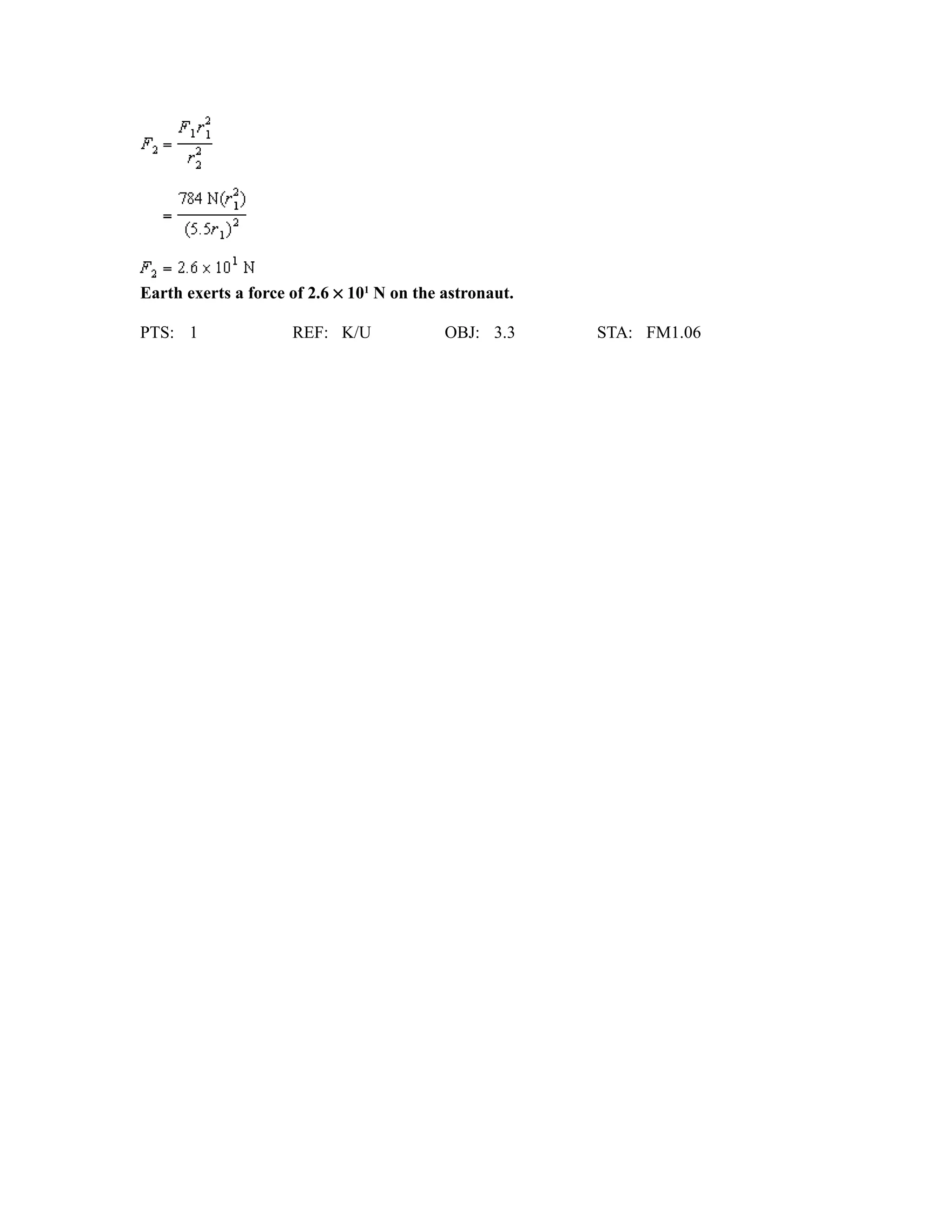This document contains a unit exam review with short answer and problem questions covering concepts in kinematics and dynamics including:
1) Sketching motion from a stroboscopic photograph and describing inertial and non-inertial frames of reference.
2) Calculating velocities and accelerations using kinematic equations for objects in motion under constant acceleration.
3) Solving dynamics problems using concepts like free-body diagrams, Newton's laws, universal gravitation, and friction to analyze forces and accelerations in physical systems.

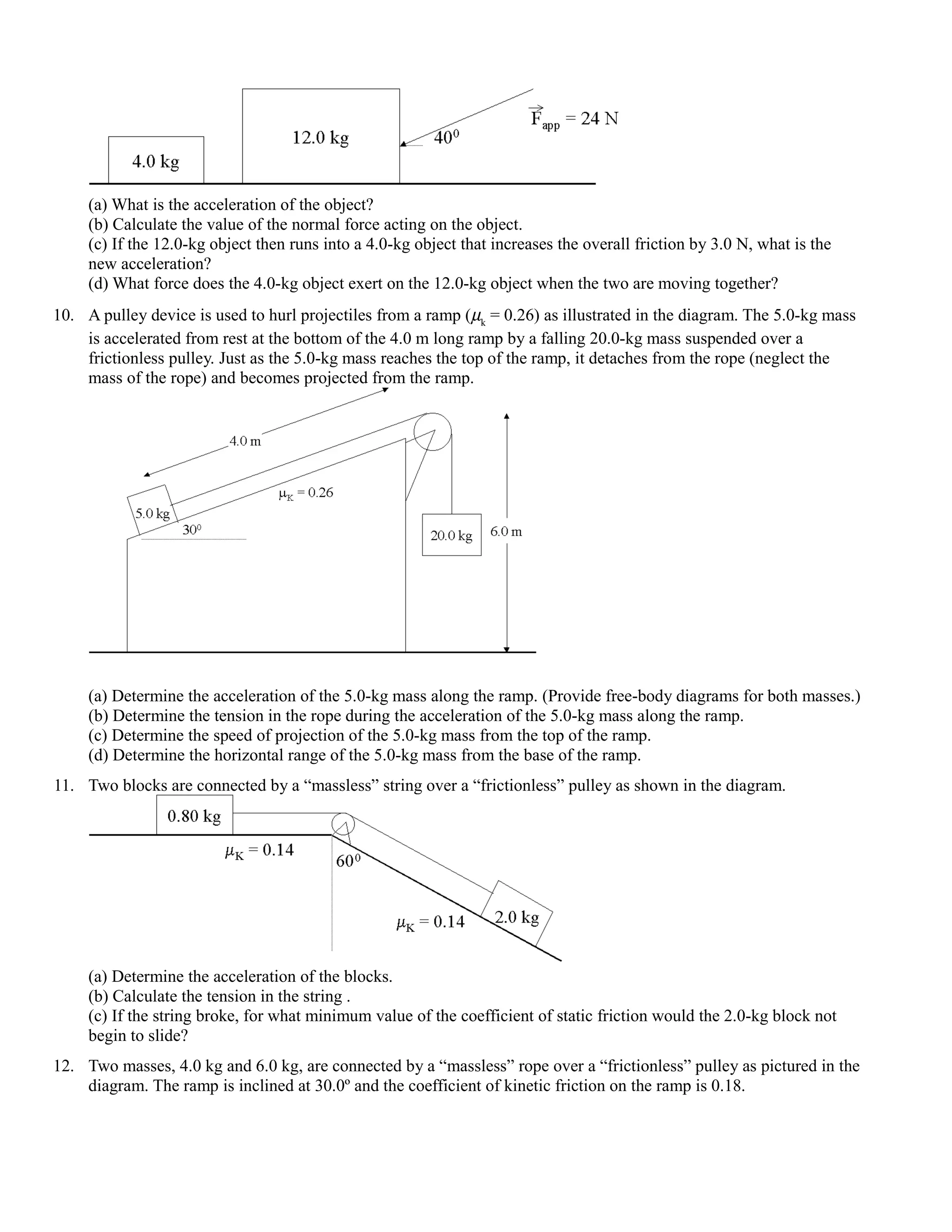
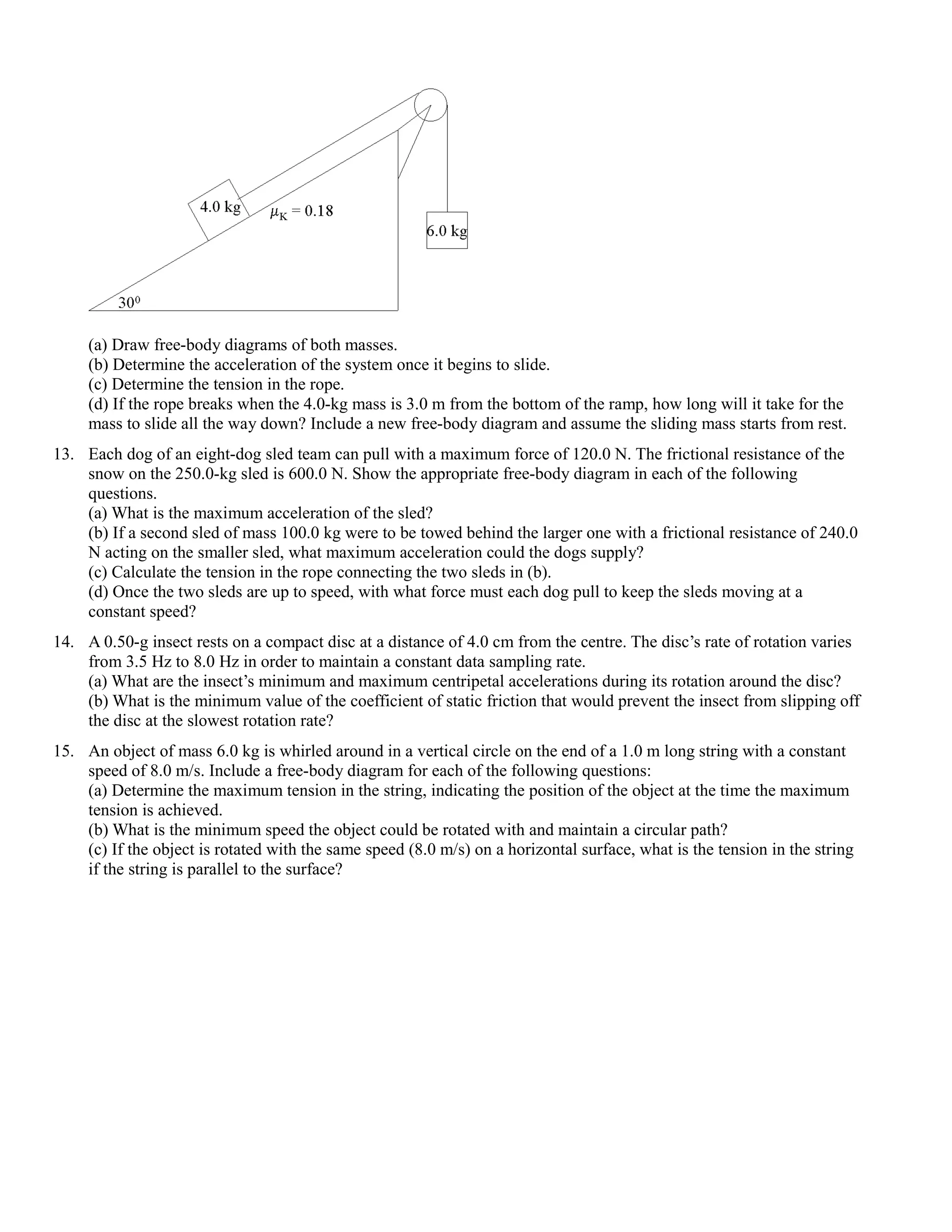
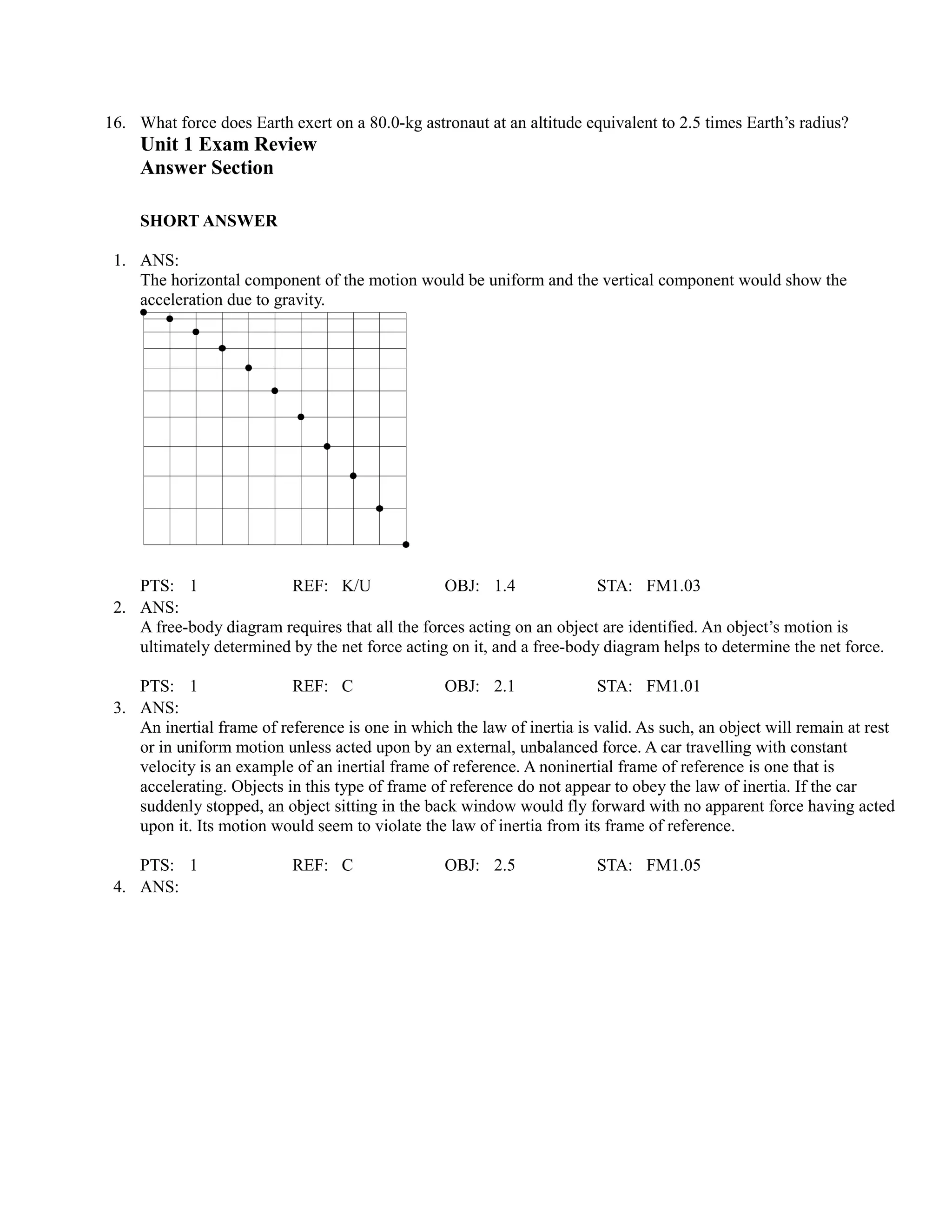

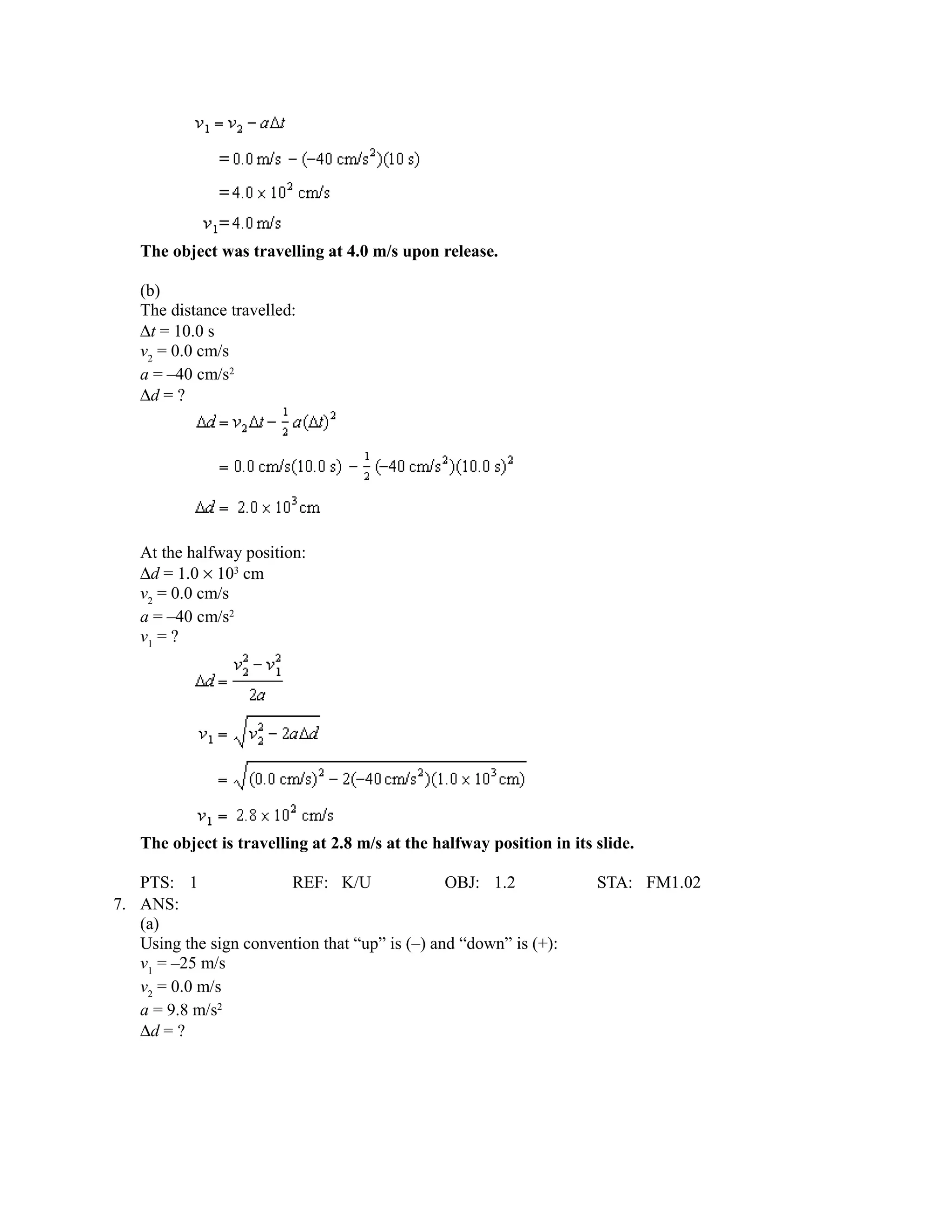
![The arrow travels 31.9 m upward to its highest point. The halfway position is 15.9 m.
The time to travel the last half of its flight:
∆d = –15.9 m
v2 = 0.0 m/s
a = 9.8 m/s2
∆t = ?
For the second arrow:
∆d = -31.9 m
a = 9.8 m/s2
∆t = 1.80 s
v1 = ?
The speed of the second arrow at launch is 27 m/s [upward].
(b)
Finding the maximum height of the second arrow:
v1 = –26.5 m/s
v2 = 0.0 m/s
a = 9.8 m/s2
∆d = ?](https://image.slidesharecdn.com/unit1questionsandsolutions-121209222817-phpapp02/75/Unit-1-questions-and-solutions-7-2048.jpg)
![The second arrow reaches a maximum height of 36 m [upward].
PTS: 1 REF: K/U OBJ: 1.3 STA: FM1.02
8. ANS:
(a)
Time of flight of shell:
Horizontal range of shell: 100 m
Horizontal component of shell’s velocity:
Angle of projection:
10 m/s = 40.0 m/s(cos θ)
θ = 76º
The gun must be aimed at an angle of 76° to the horizontal.
(b)
Vertical component of shell’s velocity: 40.0 m/s(sin 75.5°) = 38.8 m/s [up]
let “up” be (–) and “down” be (+)
v1 = –38.8 m/s
a = 9.8 m/s2
∆t = 10 s
∆d = ?
The cliff is 1.0 ×102 m high.
(c) Horizontal component of final velocity: 10 m/s](https://image.slidesharecdn.com/unit1questionsandsolutions-121209222817-phpapp02/75/Unit-1-questions-and-solutions-8-2048.jpg)
![Vertical component of final velocity: v2 = v1 + a∆t = –38.8 m/s + 9.8 m/s2(10 s)
v2 = 59.2 m/s
Using Pythagoras:
θ=
The shell lands with a velocity of 59.2 m/s at an angle of 9.6° to the vertical.
PTS: 1 REF: K/U OBJ: 1.4 STA: FM1.03
9. ANS:
(a)
Free-body diagram: FN acting up
Fg acting down
FA acting as illustrated
FK acting to the right
“Up” and “to the right” are the positive directions.
Horizontally:
The acceleration of the object is 1.0 m/s2.
(b)
Vertically:
The normal force is 1.3 × 102 N[up].
(c)
Free-body diagram: FN acting up](https://image.slidesharecdn.com/unit1questionsandsolutions-121209222817-phpapp02/75/Unit-1-questions-and-solutions-9-2048.jpg)
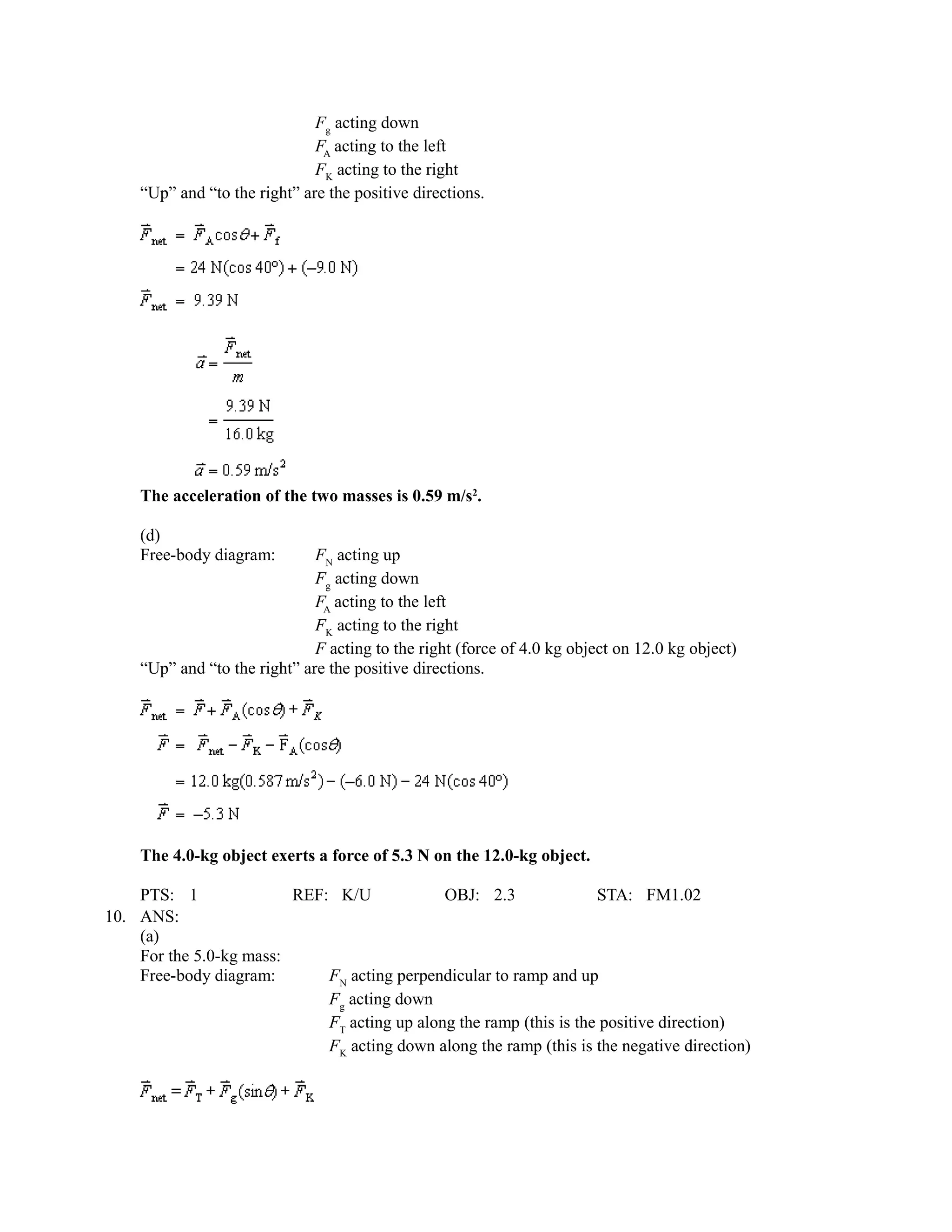
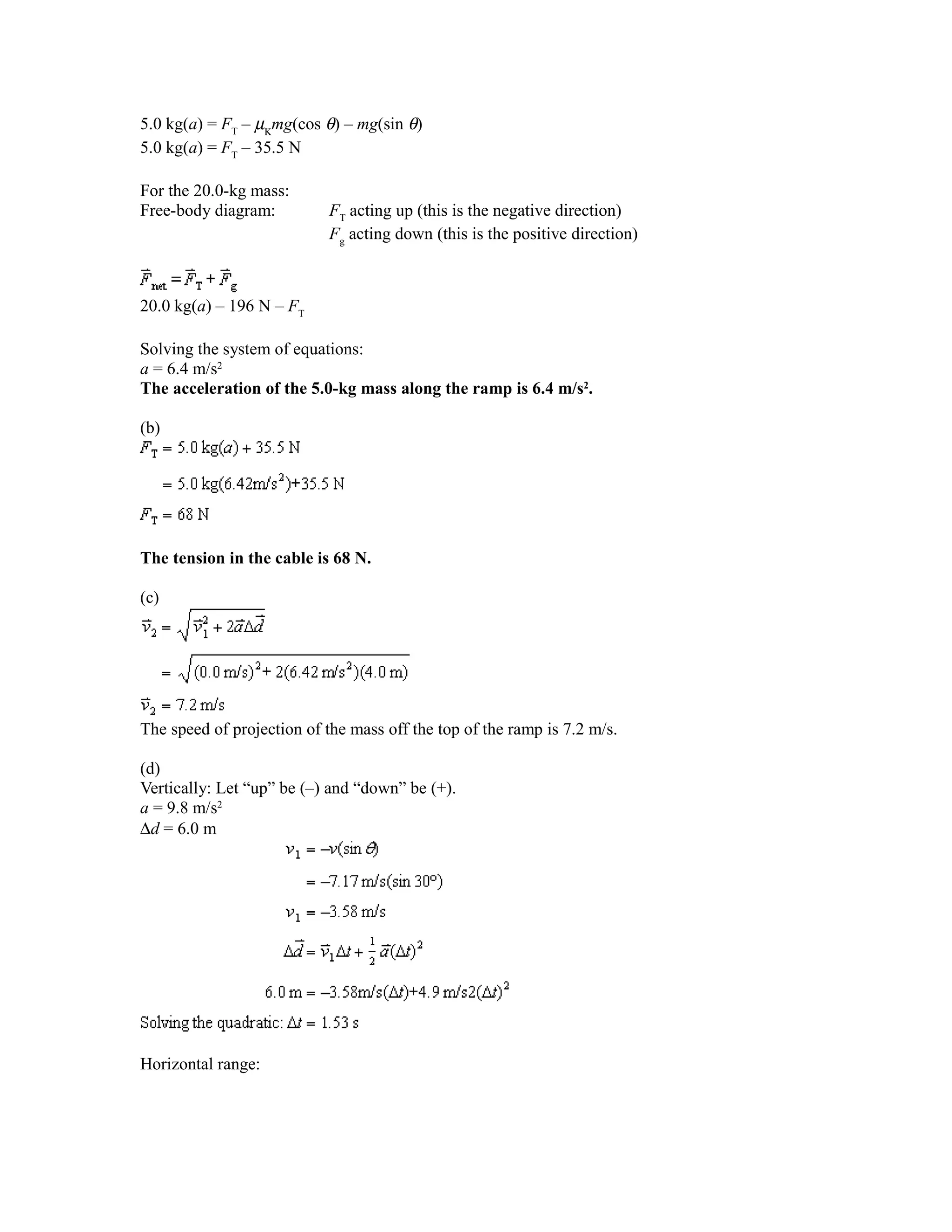

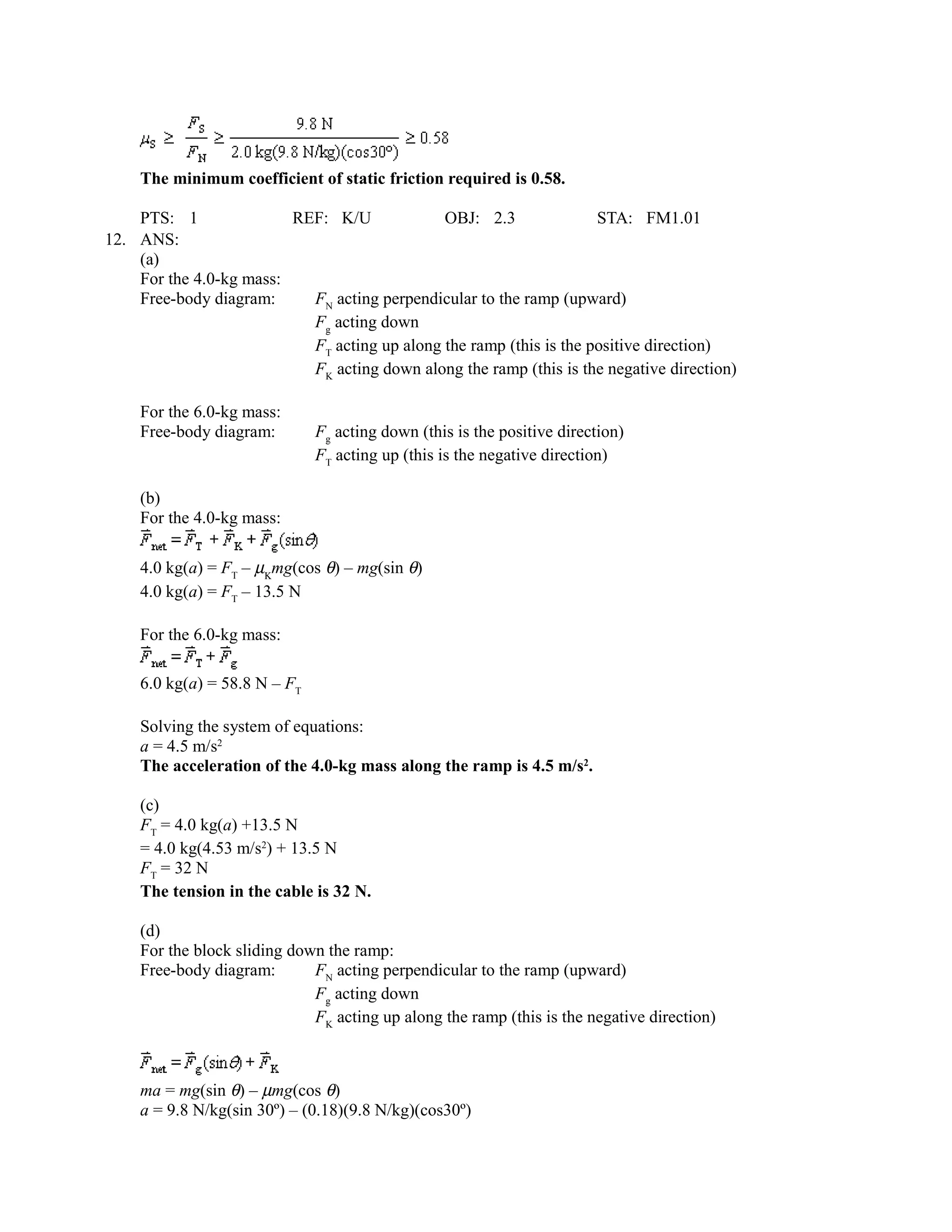
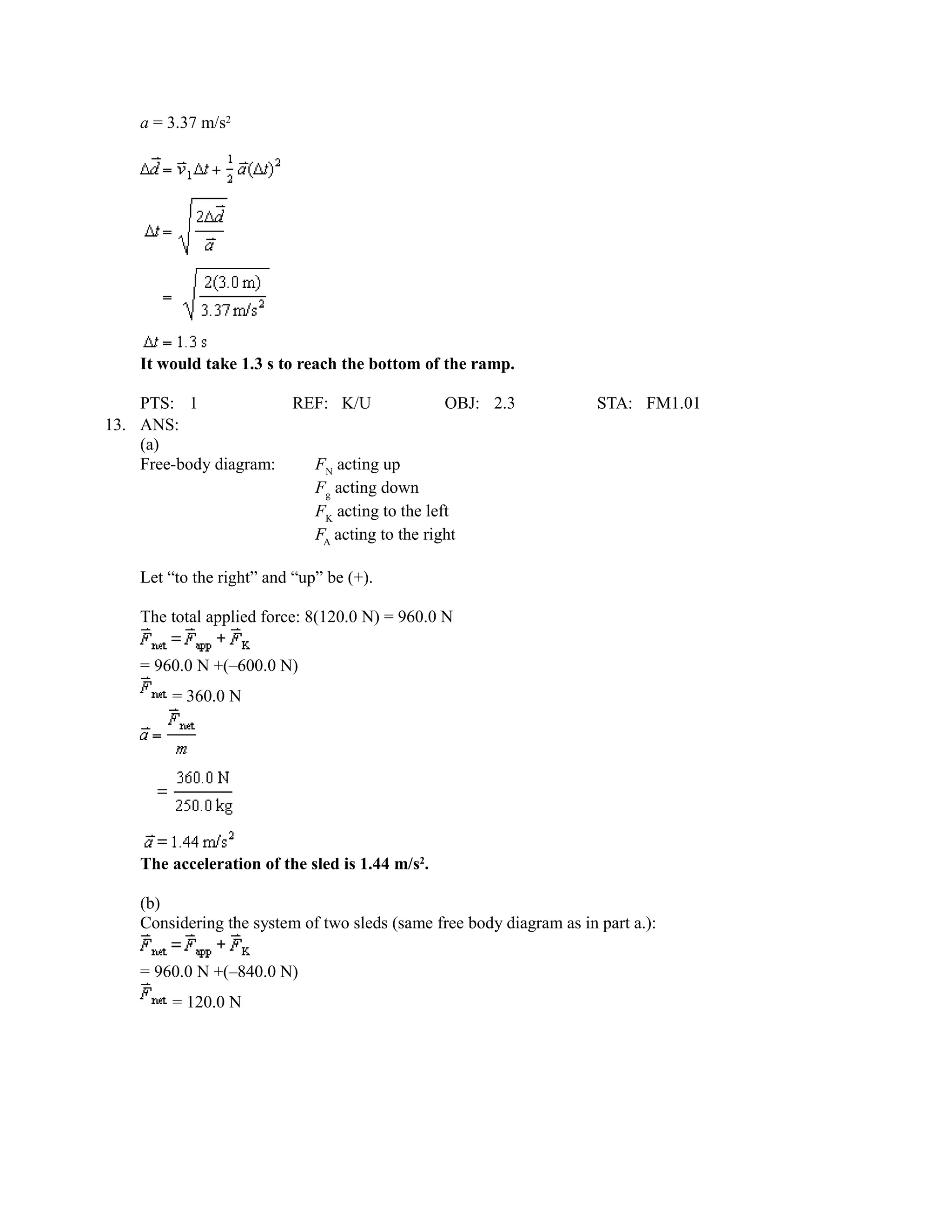
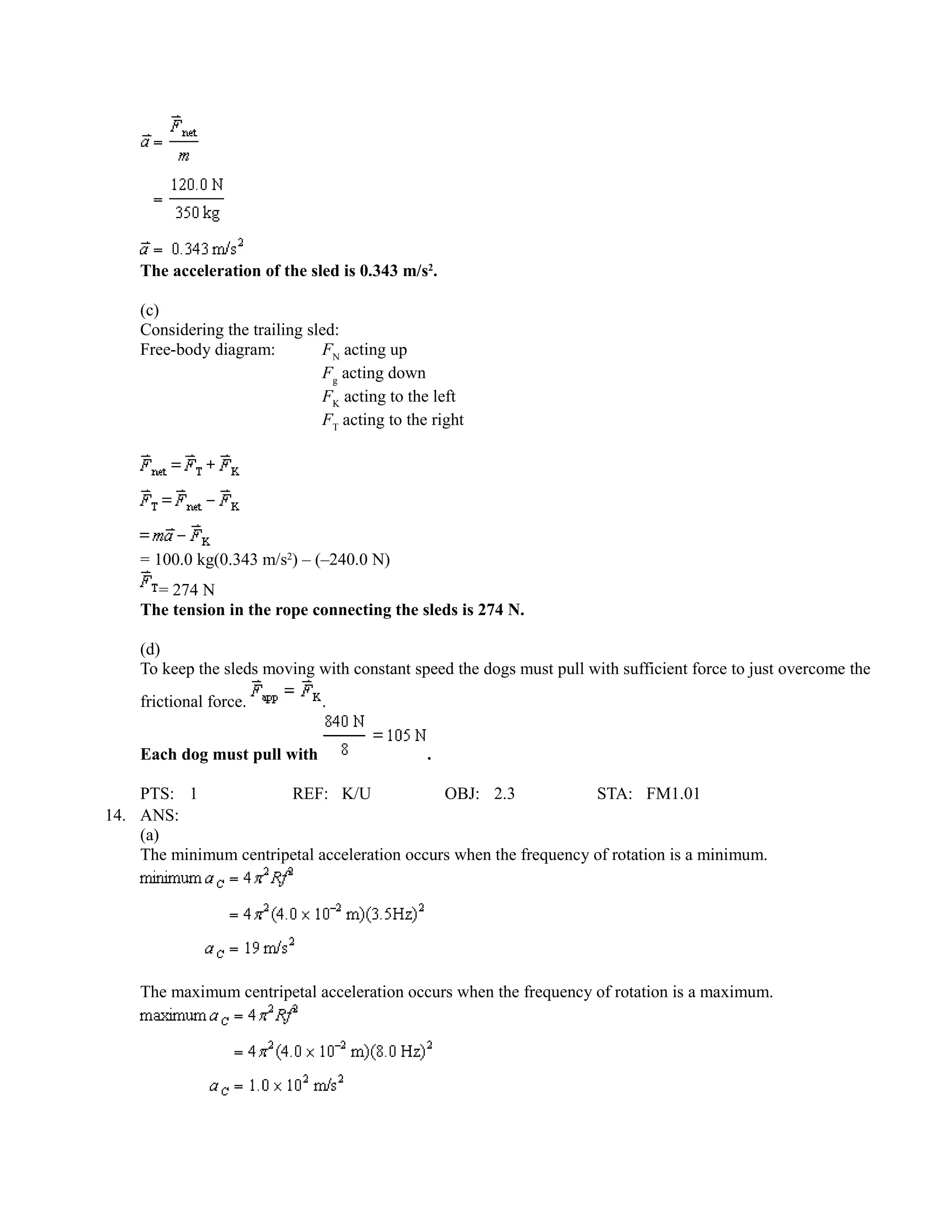
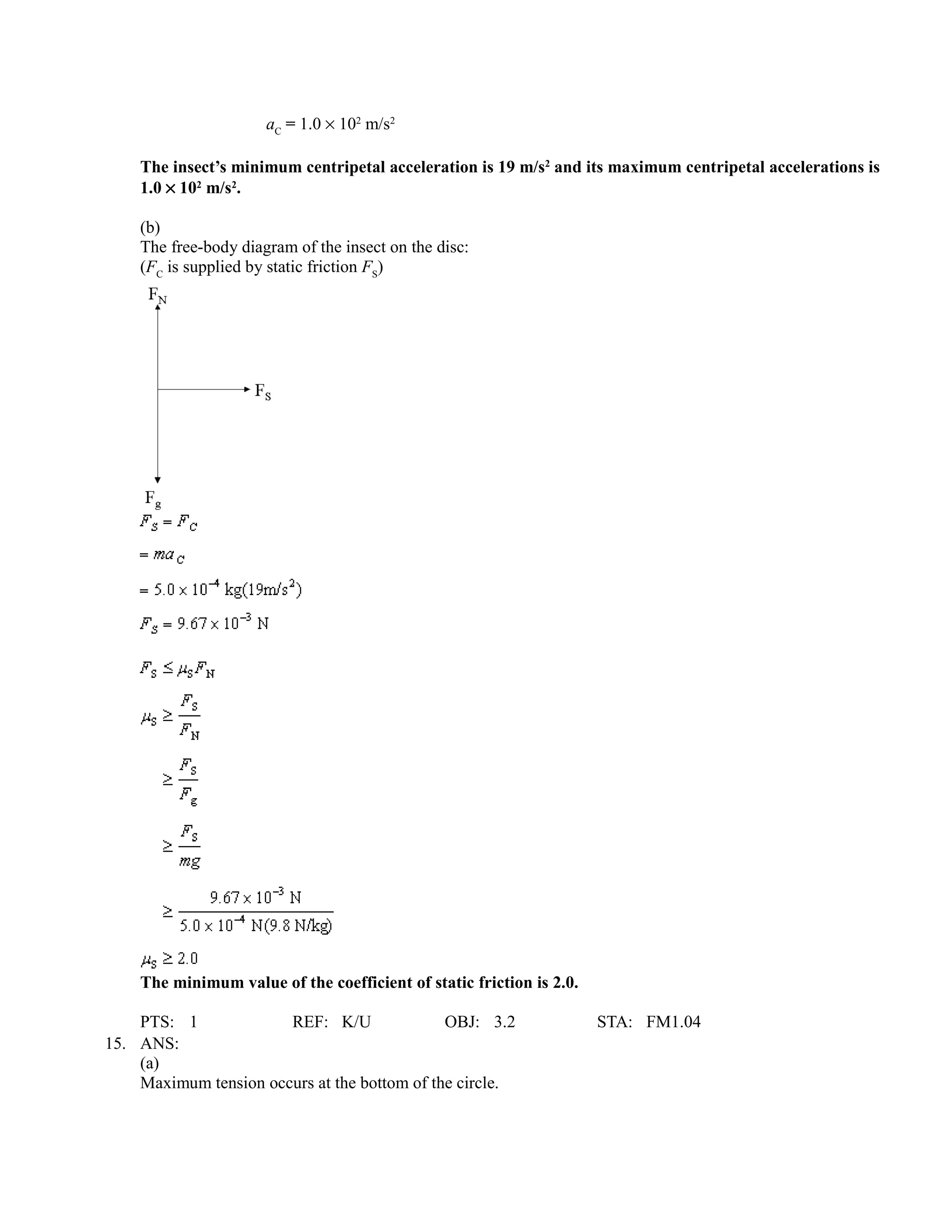
![Let “up” be negative and “down” be positive:
The maximum tension is 4.4 × 102 N [upward].
(b)
At the minimum speed, the tension in the string becomes zero at the top of the circle.](https://image.slidesharecdn.com/unit1questionsandsolutions-121209222817-phpapp02/75/Unit-1-questions-and-solutions-17-2048.jpg)
